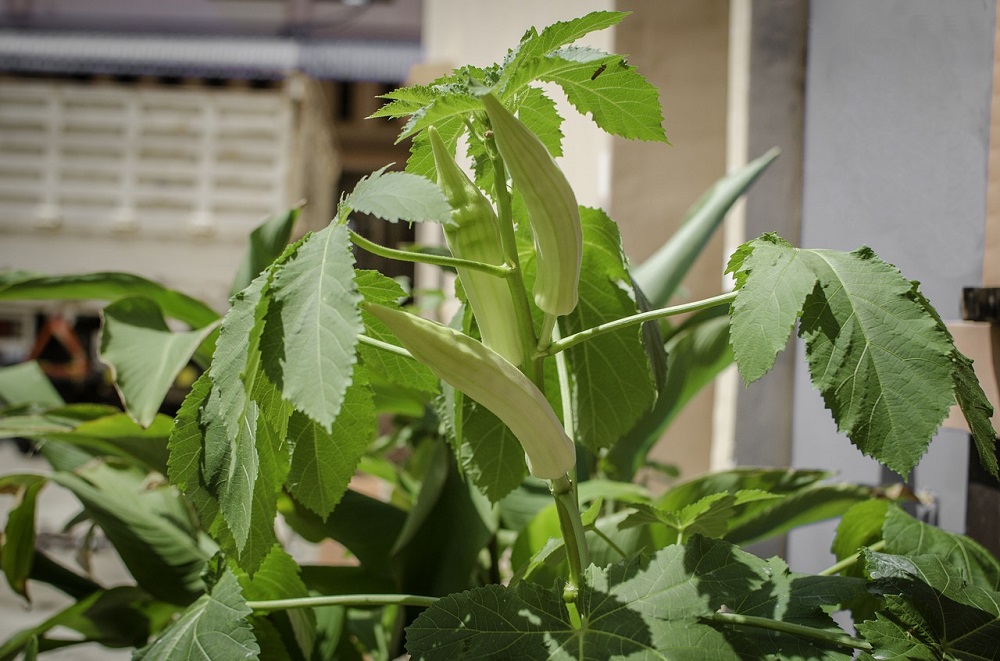Ladies finger or Okra, also named as ‘Bhindi ‘, is one of the important vegetable crops of India. The plant belongs to the family Malvaceae. It grows throughout tropical and sub-tropical regions and warmer parts in moderate areas. Ladies Finger Abelmoschus esculentum Moench. The nutritional value of 100g of edible Okra is 1.9 g protein, 0.2 g fat, 6.4 g carbohydrate, 0.7 g minerals, and 1.2 g fibers. Okra or Ladies Finger has good options as a foreign exchanger crop and accounts for 65% of the export of fresh vegetables. It produces in a 0.35 M ha area with 3.5 M mt and 9.6 mt/ha productivity. India’s significant Ladies Finger states are Bihar, West Bengal, Uttar Pradesh, Andhra Pradesh, Orissa and Karnataka. For productive farming, many implements are used like Brush Cutter, rotavator, sprayer and many more.

The steps of growing Ladies finger
In the below section we have discussed ladies fingers cultivation, helping you to start profitable farming.
Climatic Condition of Ladies finger
Ladies finger requires a long warm growing season during its growing period. It gives a good yield in warm, humid conditions. Ladies finger thrives best within a temperature degree of 22-35°C. It can be successfully cultivated in the season of rain, even in heavy rain. The plant is positively sensitive to frost injury. Seeds fail to produce when the temperature is below 20°C.
Ladies Finger Suitable Soil
Ladies Finger can develop well in all types of soil. But sandy loam and clay-loam soils are most suitable for its cultivation. Soils with high organic matter establish so that cartloads of FYM or compost should be included during land practice. In addition, the soil should have good internal drainage.
Land Preparation of ladies finger
The land should equip with 2-3 ploughing. Well, spoiled FYM is incorporated during land preparation. ladies finger plant on ridges or flat soil. If soil is heavy, planting should be accomplished on hills. Application of organic waste like neem cake and poultry manures improves the plant growth and the yield in this crop. It is achievable to lower fertilizer use using neem cake and poultry manures or other compost.
Soil Sterilization
Both physical and chemical norms can reach the sterilization of the soil. Biological control steps include treatments with steam and solar energy. Chemical control procedures include medicines with herbicides and fumigants. Soil sterilization can also be achieved using transparent plastic mulch film, termed soil solarization. The incoming solar radiation spikes the transparent plastic film during soil solarisation and absorbs in the soil. The interesting radiation converts into heat energy, which raises the soil temperature and kills many soil-borne organisms, including plant pathogens and problems.
Seed Rate and Sowing Time
The seed rate of Ladies finger is nearly 3.5-5.5 kg seeds/ha during summer seasons and 8-10 kg seeds/ha for rainy crops. The seed rate usually varies with germination percentage, spacing and season. Before planting, the seeds are washed in a solution of Bavistin (0.2%) for 6 hours. The sources dibble on either side of the furrows at a 60 x 30 cm spacing in the Kharif season and 30 x 30 cm in the summer season. Earth Auger is best for planting.
Ladies Finger Best Season for Farming
The optimum time of seed plants differ significantly, relying upon climate, varieties and their temperature requirement for growth. Usually, the crop plant between January-March and June-August. However, the same month of planting depends on the region.
Irrigation of ladies finger
The crop needs adequate wetness in the soil during the summer months for faster growth. Drip irrigation is most suitable for the Ladies finger crop as it provides uniform moisture throughout the season. The daily water requirement of the Ladies finger crop is produced during the early growth stage and plants during the peak growth stage. The irrigation system should be used daily for 75 minutes during the initial growth stage and 228 minutes during peak development of the crop with an emitter capacity of 2. Water supply on each day or alternate days with an Online type of drippers is selected.
Ladies Finger Weed control
As gathered over a long period, weed control occurs to be an essential cultural operation. Weeding, thinning, and earthling up are necessary intercultural processes of ladies fingers. Earthing up in the rows should be accomplished in the rainy season. The application of herbicides for managing weeds in ladies fingers is influential. BasalinFluchoralin 48 per cent) 1-2 litres per hectare and soil application of Tok-E-25 5 litres per hectare controlled the weeds. Shallow-rooted inter-row cultivation and hand weeding may be utilized to minimise weeds in the inter-row zone. Black plastic mulch may be used to stop weed growth. The black plastic mulch also holds the soil warm and promotes plant growth.
Ladies Finger Harvesting
The crop harvest 55 to 65 days after planting when pods are 2 to 3 inches long. At this stage, the pods are always tender. Larger okra pods will grow to be tough and fibrous. Round-podded okra types remain tender at larger pod sizes and are good to use for slicing and freezing. Since Okra produces very fast, it should be gathered every two days. The pods should not be permitted to mature on the plant because this will inhibit more pods from growing and reduce the plant’s productivity. Handling should be done carefully because the pods injure easily.
We hope you get all the points of this blog.


